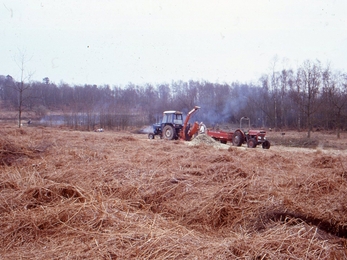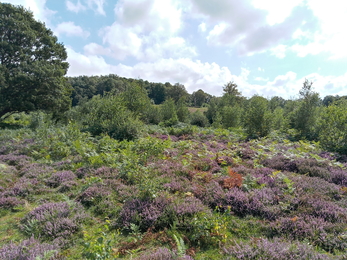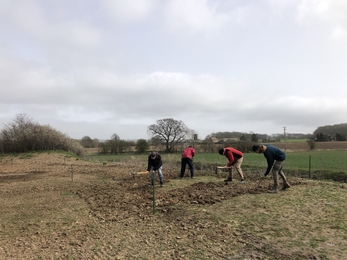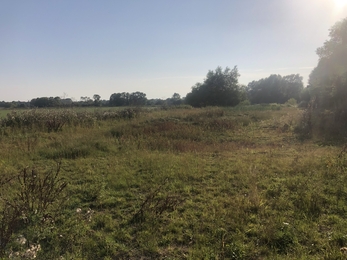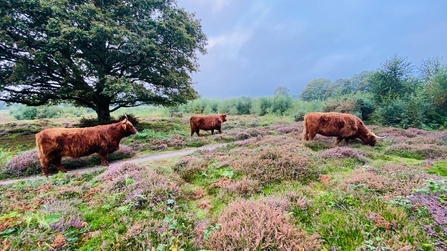
At Hothfield Heathlands, our fabulous volunteers have cut over nine hectares of bracken this year - twice! To weaken the bracken and prevent it dominating the site, we cut the bracken in the late spring and repeat the exercise in late summer. Willow emerald damselflies are also doing well at this site, and it’s a good season for keeled skimmer dragonfly after two dry seasons.
At Parkgate Down, as part of the High Downs Project, our team has been working with the Forestry Commission to help enhance our sites and their neighbouring woodlands. Work has started to fell plantation woodland next to our Park Gate reserve to provide more light and enhance the structure in the woodland to support more diversity.
Here are some stories from our Ashford Green Team:
Ian, Hothfield Heathlands:
This is a story common across most of our nature reserve. Every week, the stalwart volunteers come out on task, slog away all day cutting bracken, pulling birch trees chopping back vegetation. Although it is certainly easy to see what they have achieved at the end of each day, it is hard to demonstrate the long term benefit when that birch will regrow and that bracken seems to spring back to life.
Over the years we have collected pictures to monitor changes across the reserve, some of these pictures go back a long time. I feel these two pictures particularly tell a story. The first one was taken in 1992, at a time when we had just taken on our first full time warden for Hothfield Heathlands. The site at the time was thick with bracken and a young birch forest in the waiting. The bracken and birch were so dominant, almost nothing else was growing, with many of the heathland species on the brink of extinction.
Fast forward to the same view in August 2021. The volunteers are still tackling bracken and pulling birch, but every year the site gets better and better. The heather is spreading rapidly across the reserve, heath-spotted orchids and southern marsh orchid pop up in huge numbers, the bees and wasps riddle the ground with their burrowing, whilst dragonflies pick the unwary out of the sky.
It can sometimes feel like we are running to standstill, but each of our volunteers has an essential impact on our reserves and the wildlife that lives there.
Footnote, the red tractor in the first picture was still running in 2019 and was sold on as a working tractor for a tidy sum.
Cristina, Conningbrook Lakes:
How fantastic to be able to look back 30 years and see the change that has happened through enduring effort powered by community.
Sometimes, however, we are lucky enough to see change without having to wait 30 years. These rare opportunities that allow us to see a direct positive impact resulting from our work are like a breath of fresh air – especially after a struggling battle as we have had at Conningbrook Lakes.
Due to a neighbouring development, a series of bunds running parallel to the river Stour had to be taken down as a flood mitigation measure. After an enormous amount of lobbying – or persistent badgering you could say – we convinced the developer to create dips and pools after taking off the bunds and also to fund our wetland creation project. *Special thanks to Brian, the best digger driver in the world.*
We thought the hard work was done and all we had left to do was the fun part – throwing some seeds around… little did we know that funding delays and abnormal weather ranging from extremely wet to extremely dry, would leave us to deal with the hardest soil one has ever attempted to seed on. As you can see in the photos, this did not deter our fantastic volunteers and colleagues to break up a whole acre of rock-hard clay. Against all odds, the results are fantastic and in just a few months the area has fully overgrown, is interlaced with flowers like purple loosestrife and is an absolute ‘frogspot’ around the pools.
Thank you all so much! You are a wonderful bunch!
